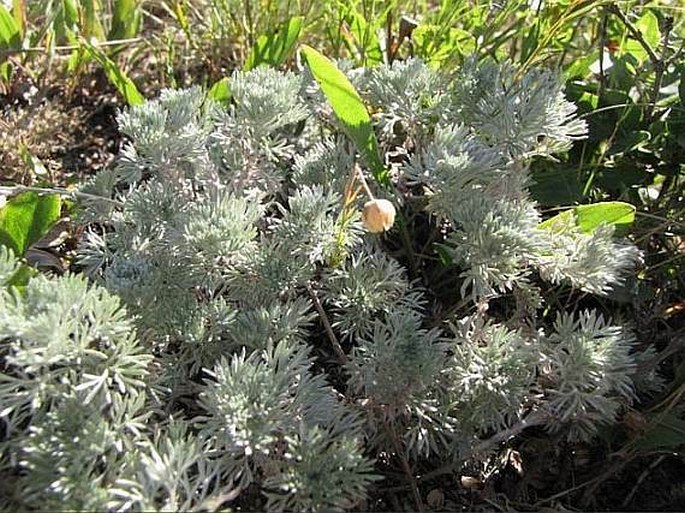Syn.: Absinthium frigidum (Willd.) Besser
Family: Asteraceae Bercht. et J. Presl

Distribution: Circumpolar in large areas in Eurasia and North America. Found in Eastern Europe (from river Volga eastward), in Russian Siberia through Krasnojarsk area to Burjatsk and Yakutsk, Altay and even into Tadjikistan and Kyrgystan and across Tibet to Mongolia, and northern China. In North America it grows from arctic areas of Alaska right down to Texas prairie. It has spread to SW of Canada and east of US. In these areas it is recognized in 2 varieties.
Ecology: It grows in steppes, prairies, dry meadows, dunes, but even in tundra, in margins of fields, disturbed areas, at elevations from 500 to 3300 m, in China up to 4000 m. Blooms from summer to autumn.
Description: Perennial herb 10–50 cm tall, strongly aromatic. The stem is straight or leaning, woody at base, silvery grey to brown. The leaves are persistent, alternate, ovoid, 5–15 cm long, divided into 2–5 thread-like segments, silvery green. Inflorescence is a leafy raceme with heads 2–3.5 mm long, disc florets yellow, ray florets absent, bracts greyish green, hairy, borne in several overlapping rows. Fruit is an achene about 3 mm long.
Use: The Blackfoot chewed the leaves to relieve heartburn. They also used them to brew tea to relieve coughs and colds. Fresh leaves were thrown onto campfires to produce a pleasant fragrance.
Notes: This plant is sometimes associated with parasitic plant Orobanche fasciculata – Broomrape (as per one of the photographs).




These images were taken in Canada, Alberta, Calgary, Nose Hill Park (summer 2013).


